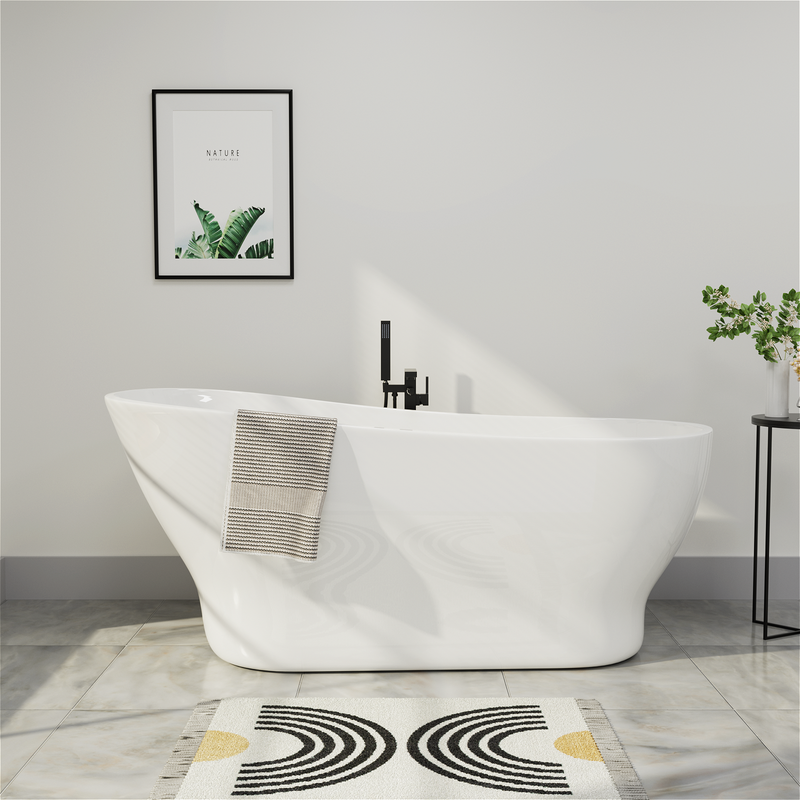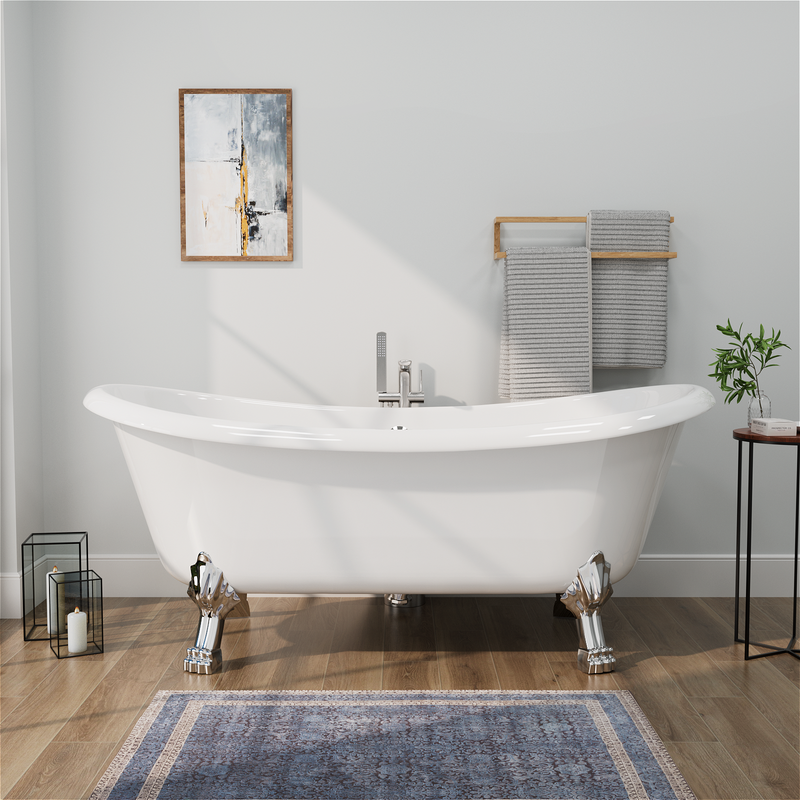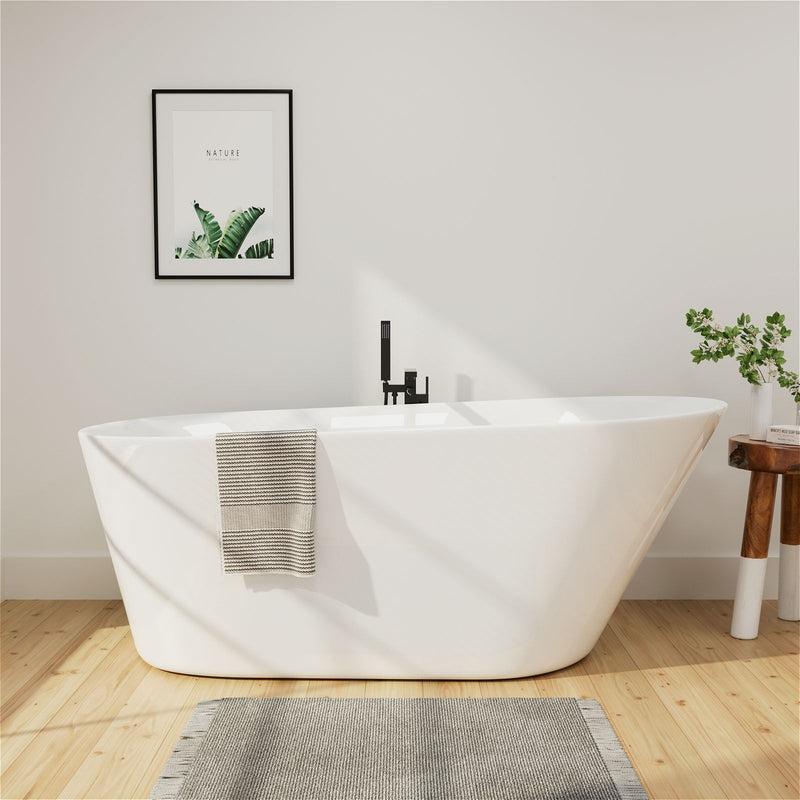Shopping for a rectangular bathtub might seem straightforward until you're confronted with countless options, technical specifications, and competing claims about what makes the "perfect" tub. The rectangular bathtub remains America's most popular choice for good reason—it offers clean lines, efficient use of space, and compatibility with most bathroom layouts. However, many homeowners discover too late that their beautiful new tub doesn't fit properly, requires expensive plumbing modifications, or becomes a nightmare to maintain.
Choosing the wrong bathtub can lead to installation headaches, unnecessary expenses, and daily frustration. The good news is that most bathtub-buying mistakes are easily avoidable with some basic knowledge and careful planning. This comprehensive guide will walk you through the five most common mistakes people make when selecting rectangular bathtubs and show you how to avoid them, ensuring your new tub provides years of satisfaction rather than regret.
Choosing the Wrong Size: More Than Just Measurements
Understanding Actual vs. Stated Dimensions
The most frequent and costly mistake homeowners make is selecting a tub that doesn't properly fit their space or body. When you see a tub listed as "60-inch rectangular," you might assume this refers to the interior soaking space, but often it describes the exterior length. The actual soaking length can be several inches shorter due to the thickness of the tub walls and the slope of the backrest.
Before shopping, measure your available space meticulously, including doorways, stairwells, and hallways the tub must pass through during installation. Remember to account for the thickness of wall materials and any surround you plan to install. Then consider your body dimensions. As noted in comfort-focused bathtub guides, your height significantly impacts which tub will feel comfortable. If you're 5'10" and choose a tub with only 43 inches of actual soaking length, you'll be sitting with your knees uncomfortably bent the entire time.
Considering User Height and Tub Depth
Rectangular tubs come in various depths, and choosing the wrong one can significantly impact your bathing experience. Standard tubs typically range from 14-20 inches in depth, while deeper soaking models may reach 22 inches or more. Deeper tubs allow for more immersion but may present challenges for children, older adults, or anyone with mobility issues.

Consider who will be using the tub regularly. A family with young children might prefer a standard-depth tub for safety and convenience, while a household of adults might appreciate the deeper soaking experience of a Japanese-style rectangular tub. If you're particularly tall, look for models specifically designed with extra length—some rectangular tubs extend to 72 inches or more to accommodate longer frames comfortably.
Ignoring Drain Placement: The Hidden Installation Challenge
The Plumbing Compatibility Problem
Drain location might seem like a minor technical detail, but it can dramatically impact your installation complexity and cost. Rectangular tubs typically feature either end drains or center drains, and if your new tub's drain doesn't align reasonably with your existing plumbing, you could be facing hundreds or even thousands of dollars in plumbing modifications.
Before falling in love with a particular tub, check your bathroom's current drain location. If you're replacing an existing tub, note whether the drain is centered or at one end. While some adjustment is possible during installation, significant relocations require opening floors, moving pipes, and potentially reinforcing the subfloor—all adding substantial cost and time to your project.
The Importance of Access Panels
Even with perfect drain alignment, consider future access for repairs. Many professional installers recommend including an access panel when installing a rectangular tub, especially if it's built-in or surrounded by walls on three sides. This simple addition can save you from having to tear out tile or break through walls if drain issues develop later.
If you're opting for a freestanding rectangular tub, you'll have easier access to plumbing components but may need to decide between exposed and concealed plumbing. Exposed pipes can become a design statement with stylish finishes, while concealed plumbing creates a cleaner look but may complicate future repairs.
Overlooking Weight Considerations: More Than Just Installation
Floor Structure and Support Needs
The weight of a filled bathtub represents a significant structural load that many homeowners underestimate. A standard 60-inch acrylic tub holds approximately 40-50 gallons of water, weighing 330-415 pounds plus the tub's weight and the bather. Larger rectangular tubs can hold 80-100 gallons or more, adding over 800 pounds of water weight alone.
This weight becomes particularly important in upstairs bathrooms or homes with older floor systems. Before selecting a heavy cast iron tub or an extra-large soaking model, consult a contractor to assess whether your floor joists require reinforcement. Ignoring this consideration can lead to sagging floors, cracked tiles, or even structural failure in extreme cases.
Material Choices and Their Weight Impact
Rectangular bathtubs come in various materials, each with different weight characteristics:
- Acrylic tubs are lightweight and generally don't require special reinforcement
- Fiberglass composites offer similar weight advantages to acrylic
- Cast iron tubs are extremely durable but can weigh 300-500 pounds empty
- Stone resin composites provide the look of natural stone with moderate weight
If you're concerned about weight but want the durability of heavier materials, look for modern composites that mimic the appearance of cast iron or stone without the substantial weight penalty. Additionally, consider that heavier tubs may require professional installation and special equipment to move into place, adding to your overall project cost.
Neglecting Cleaning and Maintenance Needs
Surface Materials and Cleaning Ease
Some bathtub materials and finishes show water spots, soap scum, and mineral deposits more readily than others. Glossy surfaces tend to be easier to wipe down but may show more water spots. Matte finishes can better conceal water spots but might require more scrubbing to remove certain types of residue.

The non-porous nature of acrylic makes it relatively resistant to staining, while enameled steel requires gentler cleaning to avoid damaging the surface. Whatever material you choose, ask about recommended cleaning methods and avoid abrasive cleaners that can damage the finish.
Design Features That Impact Cleaning
The shape and orientation of your rectangular tub significantly impact how easy it is to clean. Recessed alcove tubs with built-in surrounds typically have more corners where mold and mildew can develop, while freestanding models allow access to all sides but may create tight spaces between the tub and wall.
Pay attention to details like overflow mechanisms, faucet mounting holes, and drain assemblies—all potential dirt traps if not properly designed. Simple, smooth contours without excessive detailing tend to be easiest to maintain. Also consider the rim design—wider, flatter rims can provide convenient space for bath products but may also collect more dust and require frequent wiping.
Selecting Incompatible Styles and Features
Matching Your Bathroom's Architecture
A common aesthetic mistake is choosing a bathtub that clashes with your bathroom's overall style. A sleek, modern rectangular tub might look out of place in a traditionally styled bathroom, while a clawfoot-style rectangular tub could seem mismatched in a contemporary space.
Consider the other elements in your bathroom—vanity, lighting, fixtures, and tile—and look for a tub that complements these existing or planned features. If you're drawn to a particular style like a minimalist rectangular soaking tub, be prepared to commit to that aesthetic throughout the space for a cohesive look.
Practical Features vs. Trendy Extras
It's easy to be seduced by luxury features like whirlpool jets, air baths, or built-in heating systems, but consider whether you'll actually use these amenities regularly. Complex systems require more maintenance, can be expensive to repair, and may have shorter lifespans than simple soaking tubs.
Before investing in premium features, honestly assess your bathing habits. If you take quick showers most days and only occasionally soak, a basic deep-soaking rectangular tub might serve you better than a high-tech model with multiple jet systems. Similarly, if you have limited storage space, built-in shelves or armrests might be valuable, while in a larger bathroom with ample storage, these features might be less important.
FAQs
What is the most common mistake people make when buying a rectangular bathtub?
The most common mistake is choosing the wrong size—either for the bathroom space or for the users' bodies. Many homeowners focus exclusively on exterior dimensions without considering actual soaking length, depth, and how the tub will accommodate their height and proportions.
How much should I budget for plumbing modifications when replacing a rectangular tub?
If your new tub has similar drain location to your old one, plumbing costs might be minimal. However, if you need to relocate drains or water supply lines, budget at least $500-$1,500 for plumbing work, with complex jobs potentially costing more.
Are heavier material tubs like cast iron worth the extra cost and installation challenges?
Cast iron tubs offer exceptional durability and excellent heat retention, but their weight requires verification of floor capacity and may necessitate professional installation. For many homeowners, modern composites like stone resin offer similar benefits with less weight and easier installation.
What is the easiest-to-clean rectangular tub design?
Freestanding acrylic tubs with smooth, non-porous surfaces and minimal detailing are generally easiest to clean. Alcove tubs with integrated surrounds have more corners where mold can develop, requiring more diligent cleaning.
Can I install a rectangular tub myself, or should I hire a professional?
Simple alcove tub replacements can be DIY projects for experienced homeowners, but freestanding tubs often require plumbing adjustments, and heavy tubs like cast iron typically need professional installation. Always consult local building codes and obtain permits if required.
Conclusion
Selecting the right rectangular bathtub involves careful consideration of size, drain placement, weight, maintenance requirements, and style compatibility. By avoiding these common mistakes—taking accurate measurements, verifying drain locations, assessing structural capacity, considering cleaning needs, and choosing appropriate features—you can ensure your new tub provides both aesthetic pleasure and practical functionality for years to come.
Remember that the perfect rectangular tub isn't necessarily the most expensive or feature-rich model, but the one that best fits your space, your body, your maintenance preferences, and your bathing habits. With proper planning and attention to these key factors, your rectangular bathtub investment will deliver daily satisfaction rather than regret, creating a personal oasis that enhances both your bathroom's beauty and your quality of life.





